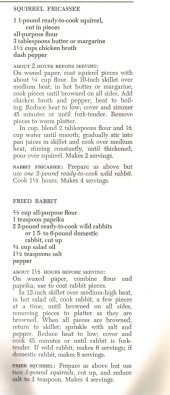I would not think myself any kind of expert on the topic but I do have some experience with squirrels. I mostly use traps as hitting them even with a firearm wouldn't be efficient, when I have traps that are working for me 24/7 (well actually half that time, because the squirrels sleep at night). I have found that tube-style traps are the easiest trap to catch squirrels with [
Picture of a tube style trap at commercial website]; a 110 conibear will get the job done too, but you have to know a little bit more about how to set it up and if your set the trap using bad safety techniques, you could break a finger or thumb, so I wouldn't recommend one of those to anyone who doesn't already know what they are doing. Nice thing about these traps though, is the squirrel is dispatched quick; I have a tendency to think that a broken neck that you never saw coming, would be a bit less traumatic than the stress of a drowning, but I wouldn't want to tangle with an ornery squirrel trapped in a cage with a club neither.
I just use peanut butter on the trap-pan and I will generally put four traps out at a time and the first day, I'll generally get about four to eight squirrels; that number drops a bit on the second day and still more as time wears on. As you start cleaning out the local population, the surplus squirrels from the surrounding areas start to fill in, so you'll get a lag after a week or two as the local population plummets but it'll pick back up after the third or fourth week.
If it's late-fall or winter, I will skin them out like I would any fur-bearing animal; while the carcass hangs upside-down suspended from a gambrel or a rope, I cut around each foot and cut down each hind-leg, cutting the anus away from the tail and cutting the genitals away from the belly-hide and then pull the skin down like taking off a sock, gently using the knife to cut away the connective tissue between the meat and the skin.
If the fur isn't prime and you don't want the leather, then the technique recommended by Ardilla Esch, is a good one; this sounds very similar:
Skinning a Squirrel
If I have lots of fresh squirrel might use the legs as stew-meat in a slow-cooker or pressure-cooker; usually, I turn it into dog food, minus the GI tract which gets composted. You can also make a pretty convincing Buffalo-style squirrel wings with the legs; alternatively, you can do a grilled squirrel teriyaki.

The trouble is, the meat to bones ratio is a bit towards the, "this is a lot of work to remove the meat from the bones, compared to how much meat I'm getting" kinda thing.
Given my druthers, I'd much prefer woodchuck or even beaver.
I realize that this is an old thread but I was reading the responses and I was moved to contribute.

Best Regards!





 The trouble is, the meat to bones ratio is a bit towards the, "this is a lot of work to remove the meat from the bones, compared to how much meat I'm getting" kinda thing.
The trouble is, the meat to bones ratio is a bit towards the, "this is a lot of work to remove the meat from the bones, compared to how much meat I'm getting" kinda thing.
